Exploring a European, Tropical Garden: Part 2
I have been enjoying sharing with you about my recent trip to the beautiful gardens of Vizcaya, located in Miami, Florida. The trip and garden visit came as a part of my partnership with the folks at Troy-Bilt. These gardens are inspired by Italian gardens and use plants that thrive in tropical climates.
Last time, we explored the secret garden, climbed up the man-made hill and saw a most magnificent, covered patio.
Today, I invite you to journey with me as we explore the gardens further…
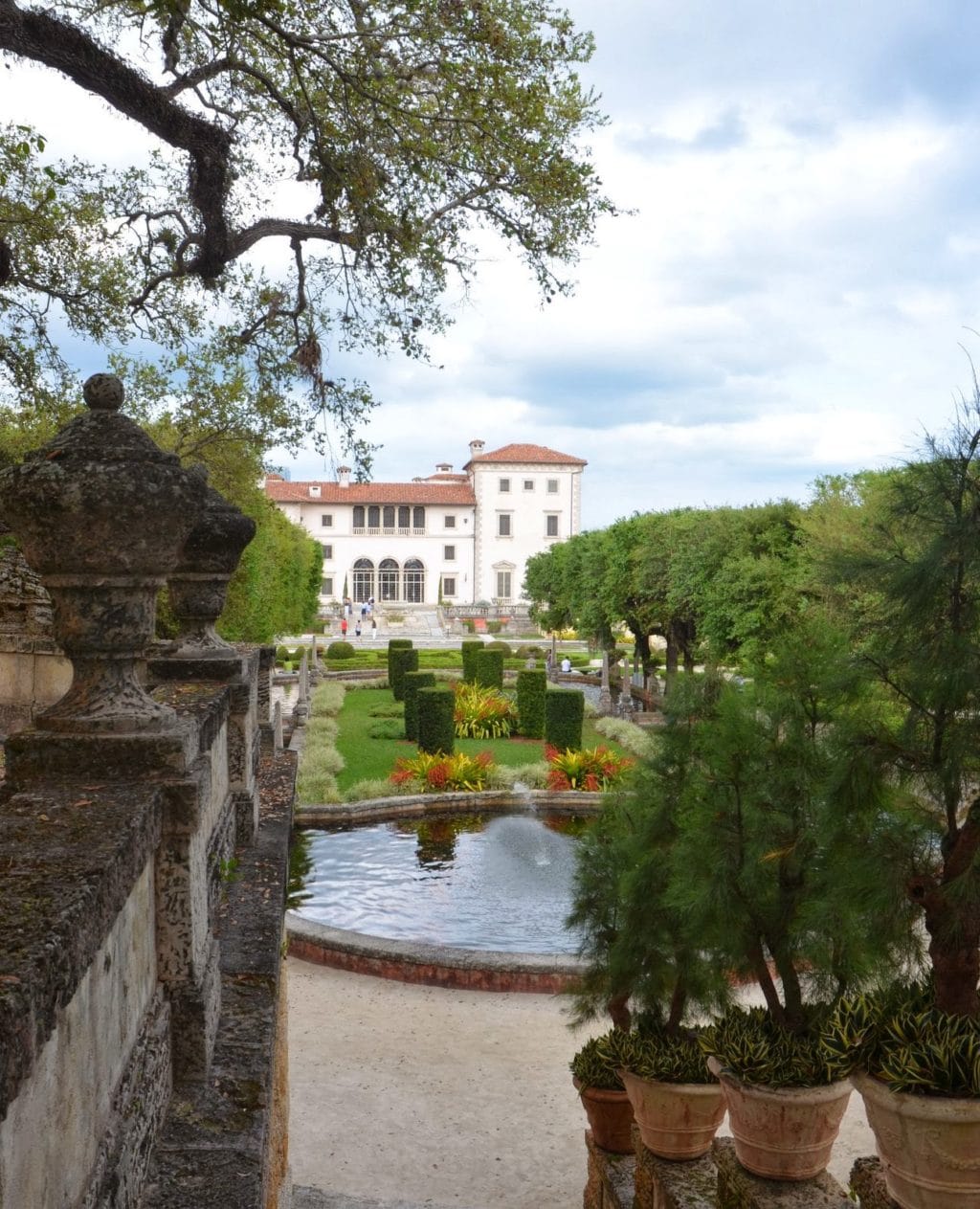
The second part of our garden journey begins at the top of the man-made hill, looking toward the house.
On top of the wall, are examples of the stonework present throughout the gardens. Most of it was made from limestone, which had a real ‘aged’ appearance.
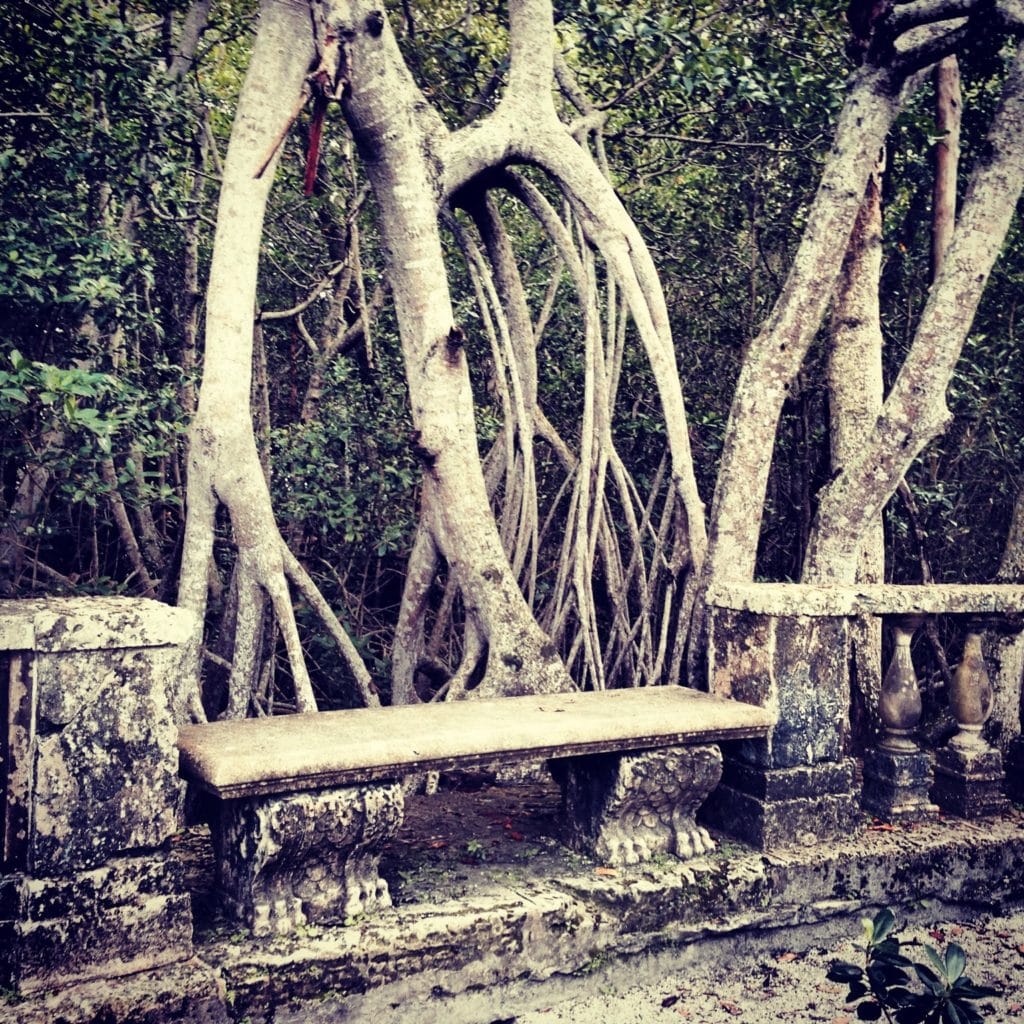
This is a photo that I shared on my Instagram account of the mangrove forest.
Mangroves are trees that grow along coastal areas in the tropics in areas where most other plants cannot grow because of the salty water. They are an important of the ecosystem and help to prevent erosion.
*Imagine how spooky this area would look on a foggy day?
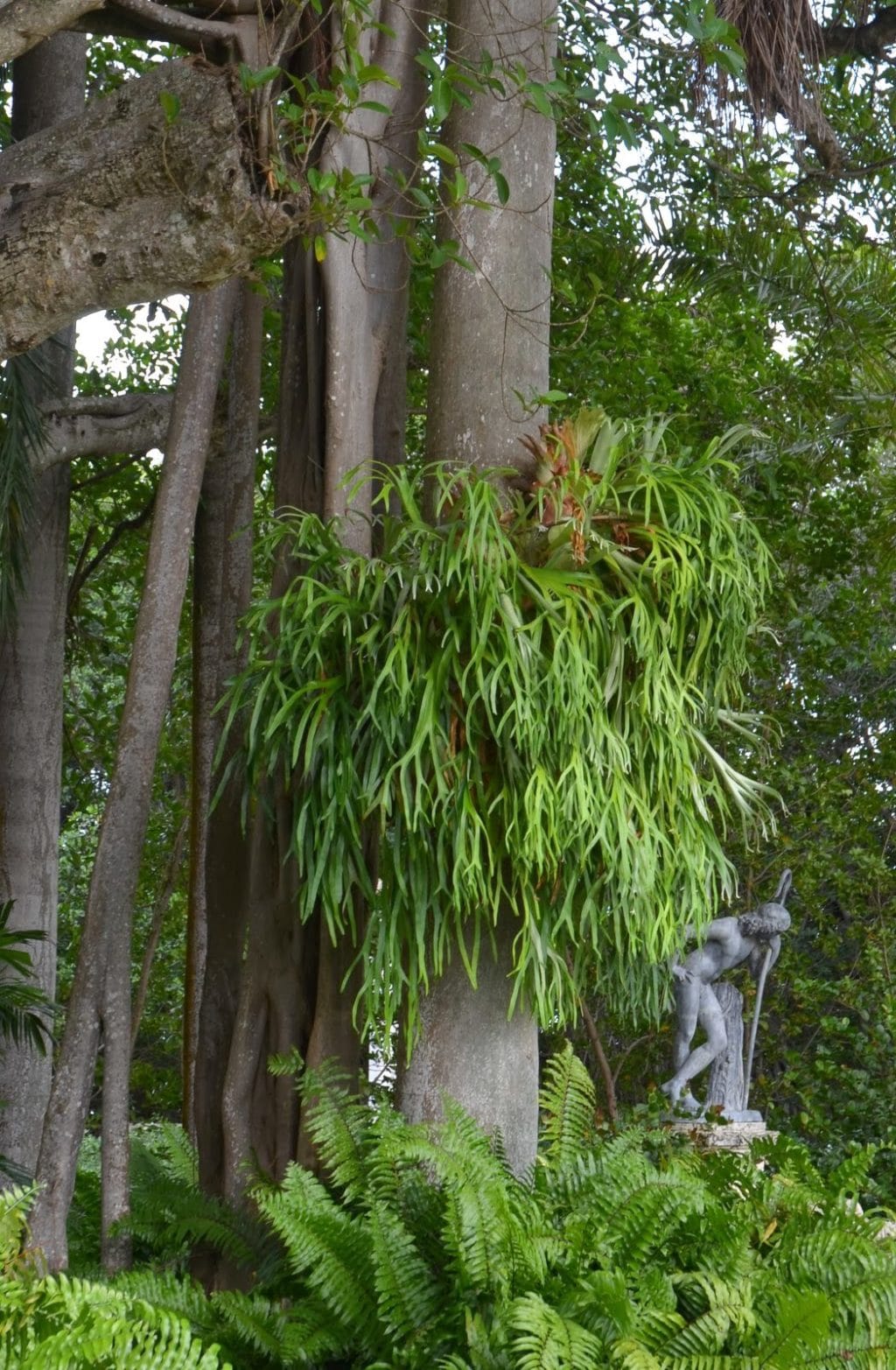
A large staghorn fern (Platycerium bifurcatum) was mounted from the side of a Royal Palm tree. They are epiphytes, which mean that they get water and nutrients from the air and not from the host plant.
When wet, this large staghorn fern can weigh up to 200 pounds!
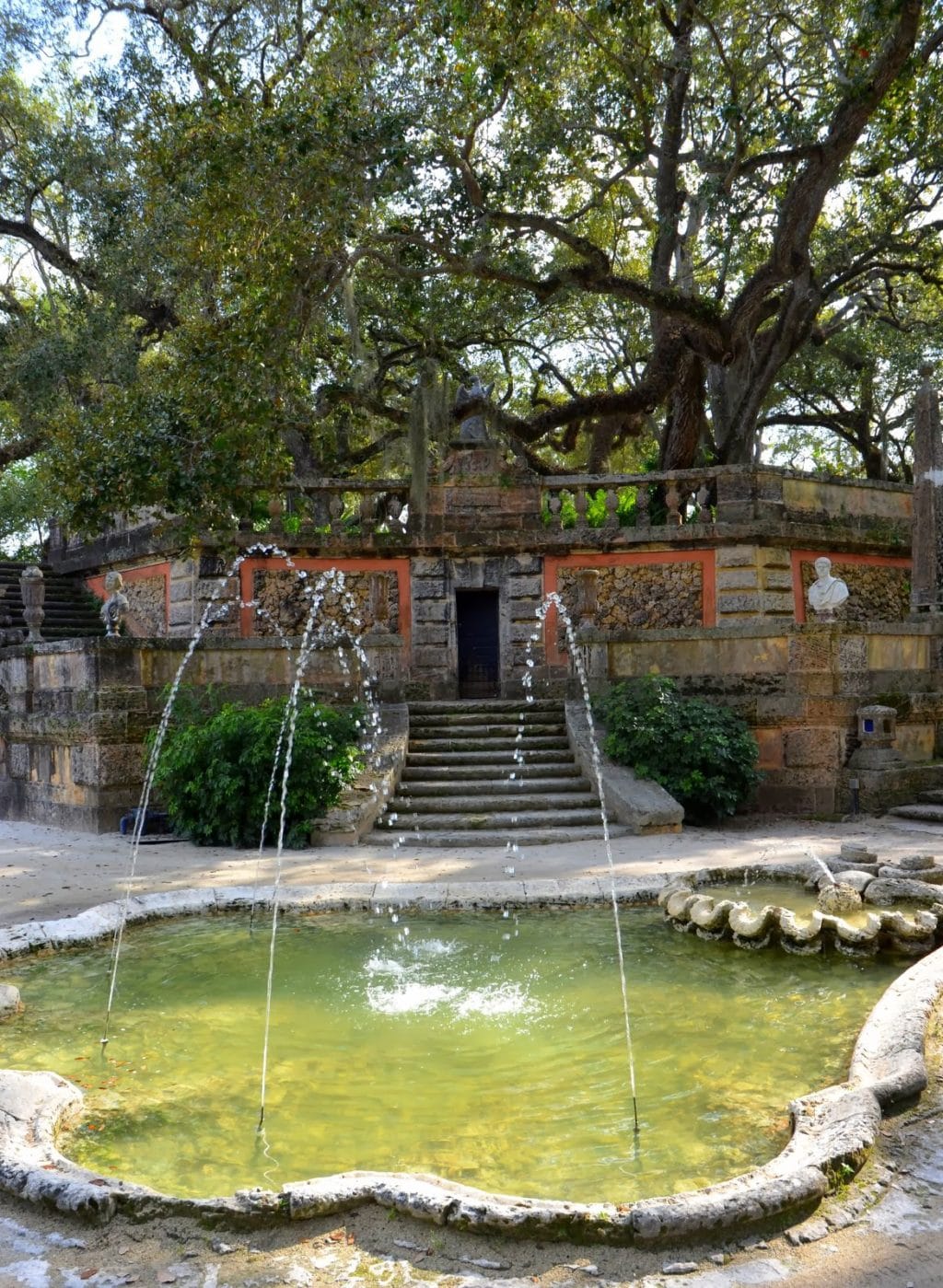
If you look carefully, you can Spanish moss hanging from the Southern Live Oak, which also grow in the desert – they just don’t get as big here.
*Did you know that Spanish moss is NOT a moss? It is another example of an epiphyte and gets its water and nutrients from the air. I have some from my trip to Savannah, Georgia last year that I used to make a terrarium.
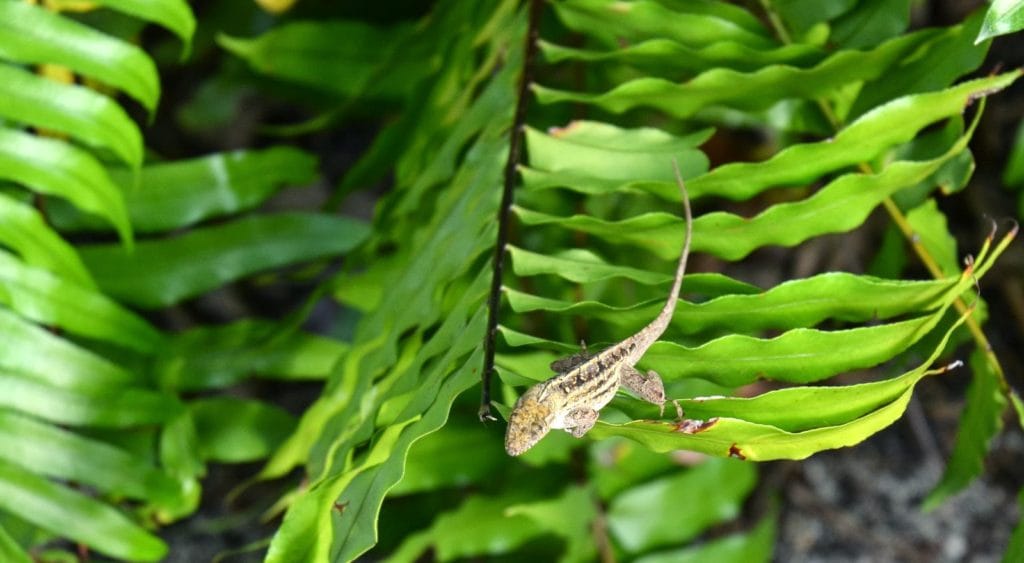
A brown anole, which is a lizard native to Cuba and the Bahamas. They are considered an invasive species in Florida.
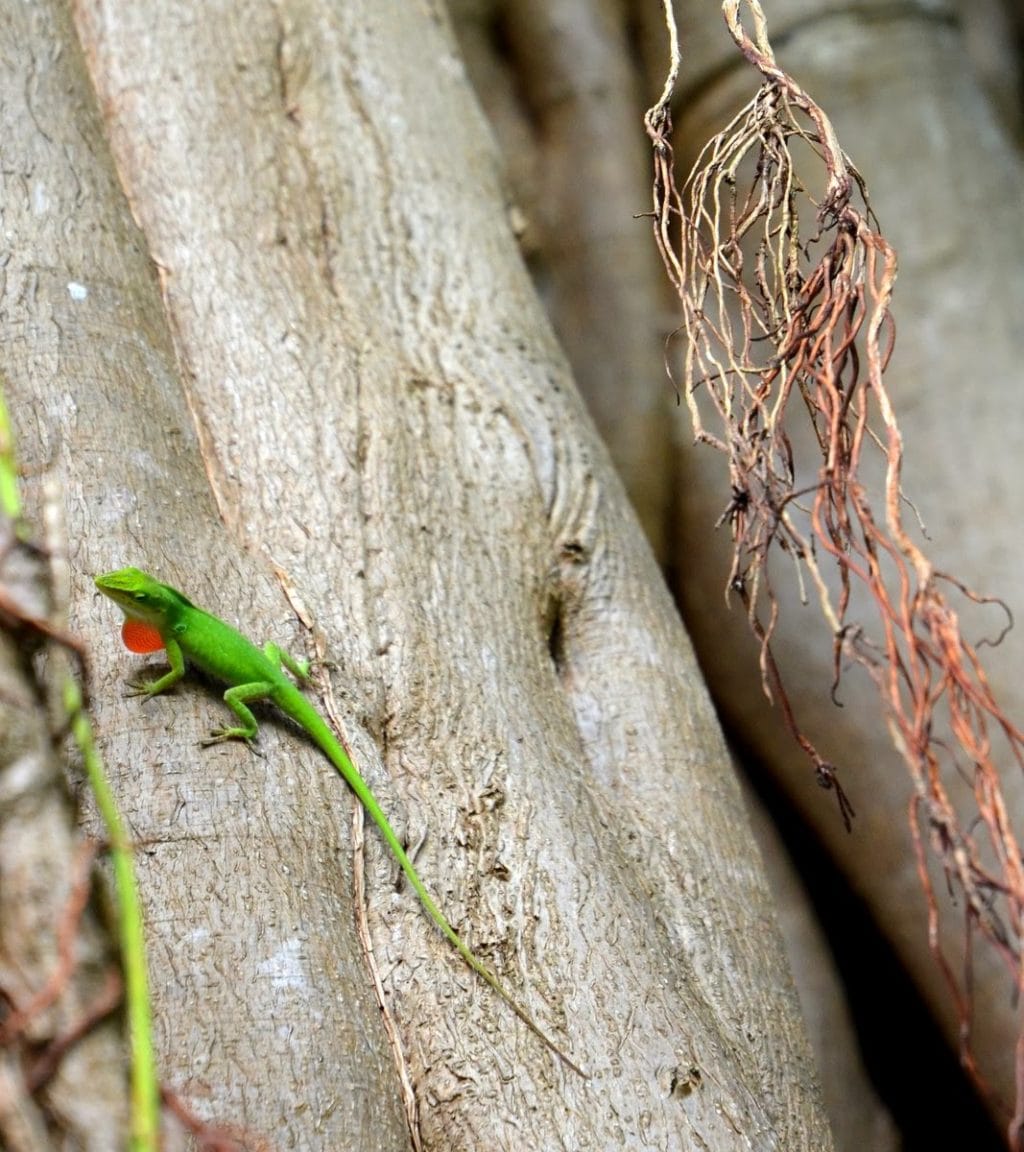
This is a green anole, which is NOT considered invasive.
**A special thanks to my friend and garden companion, Steve Asbell, who explained the difference between these two lizards.
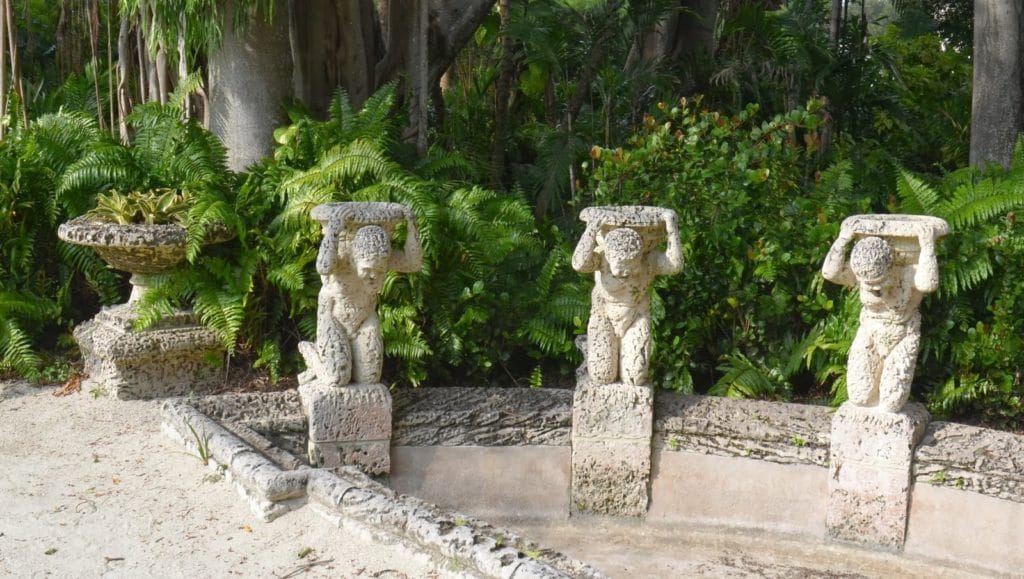
More examples of the statuary throughout the garden with ferns in the background.
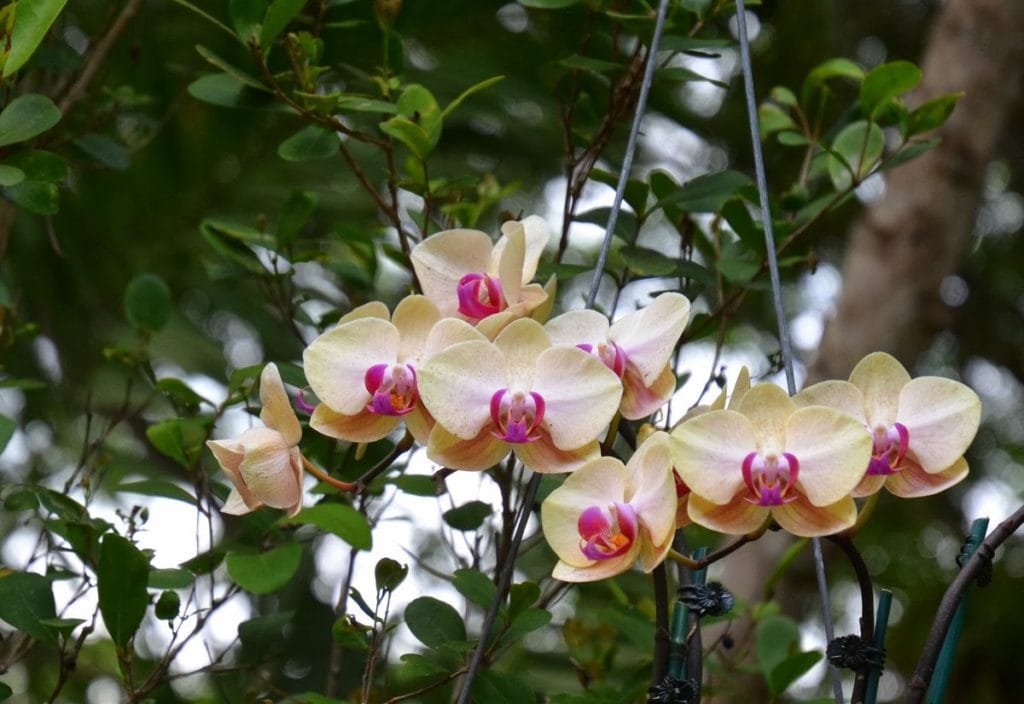
Orchids grew naturally outdoors, which made me slightly jealous, although I have been able to grow them indoors.
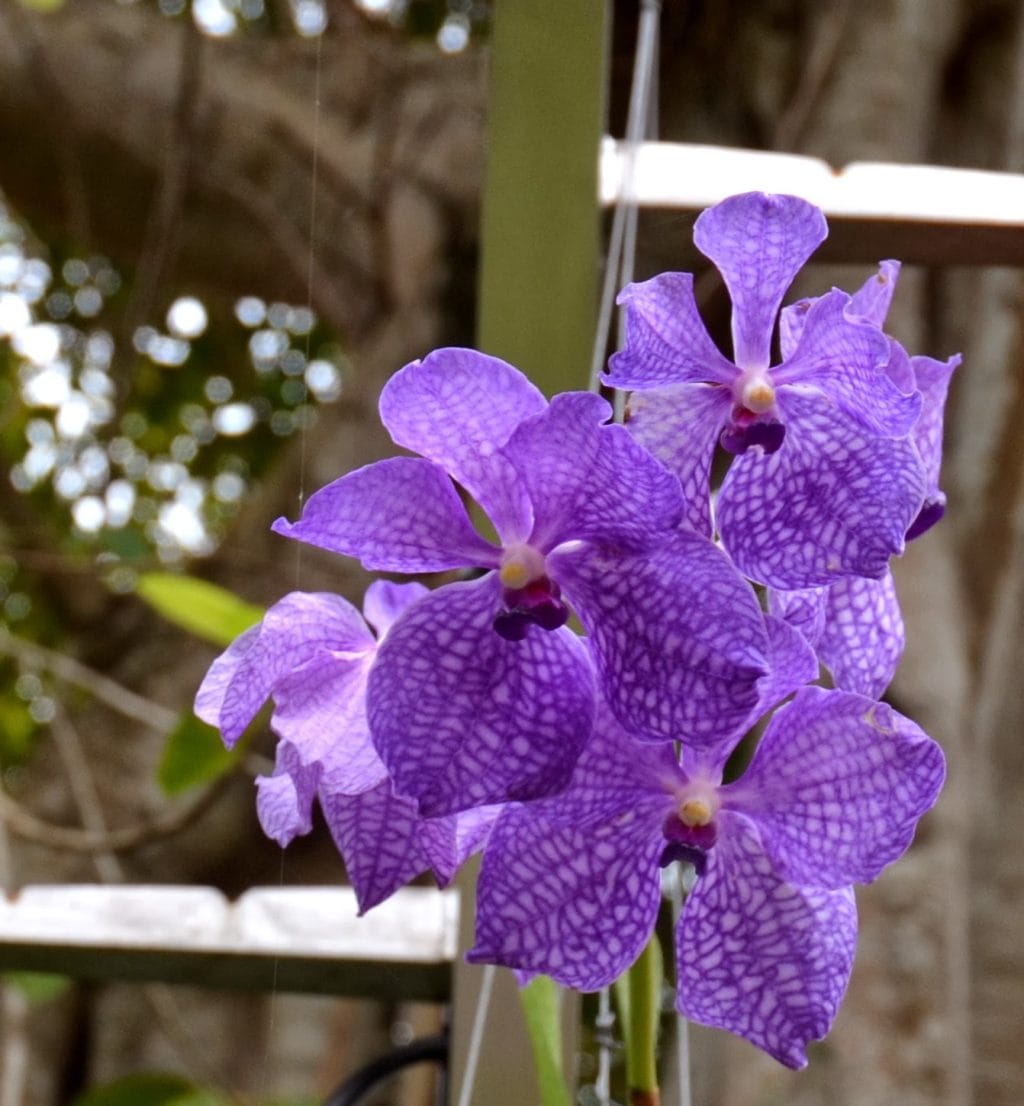
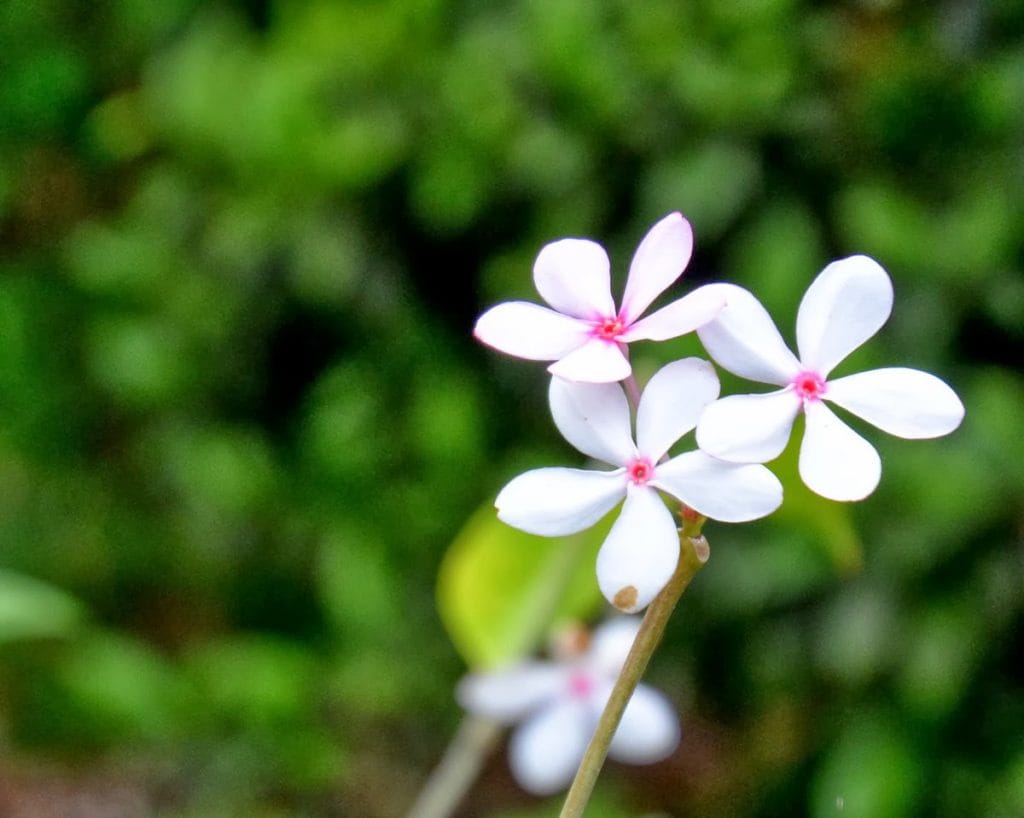
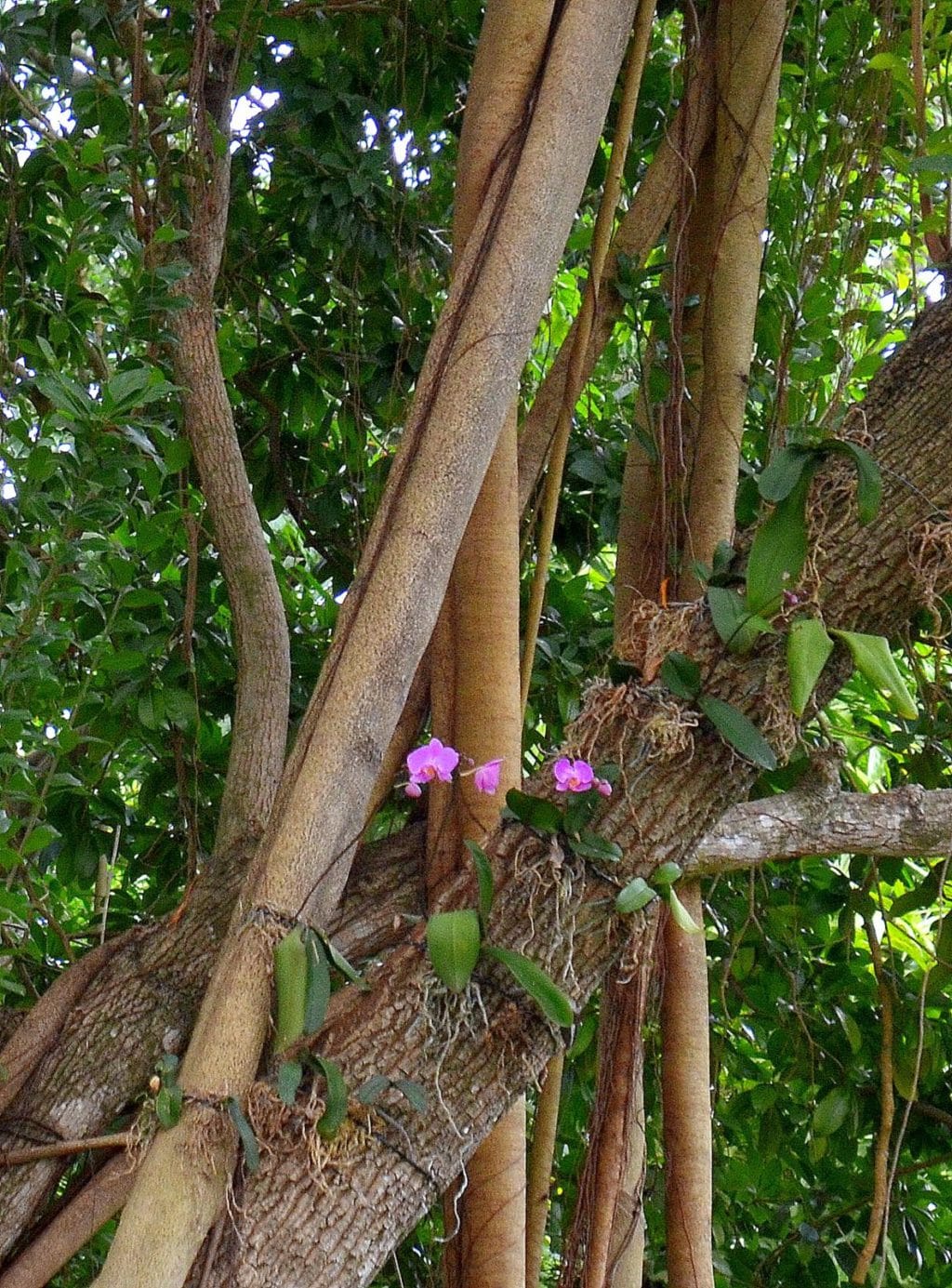
There were even orchids growing in trees, which is where they are often found growing in the wild. Most cultivated orchids are epiphytes, which means that they get their water and nutrients from the air.
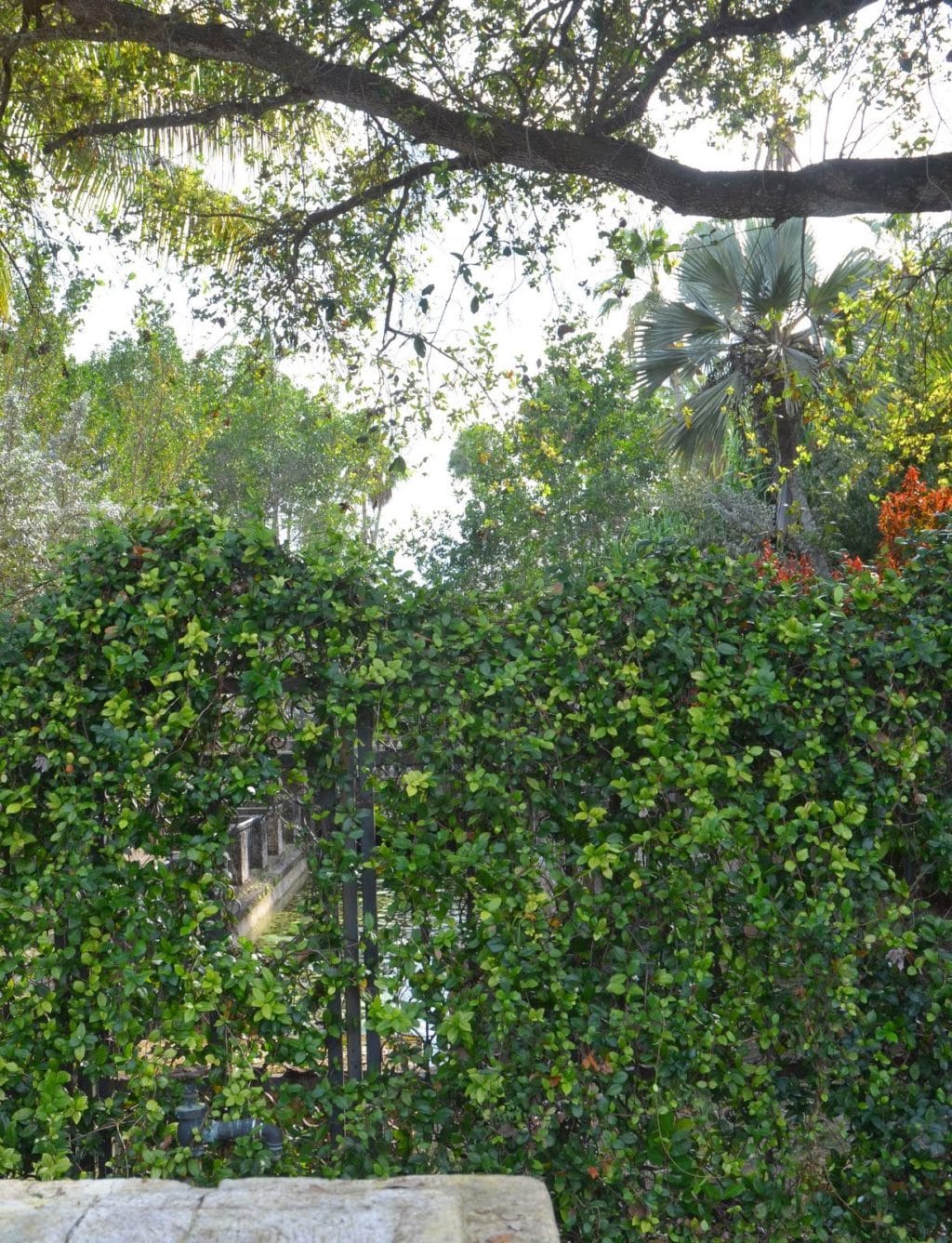
As we neared the end of our journey through the garden, we encountered a fence with vines growing all over it concealing another secret garden. There was a small hole, so I peeked through.
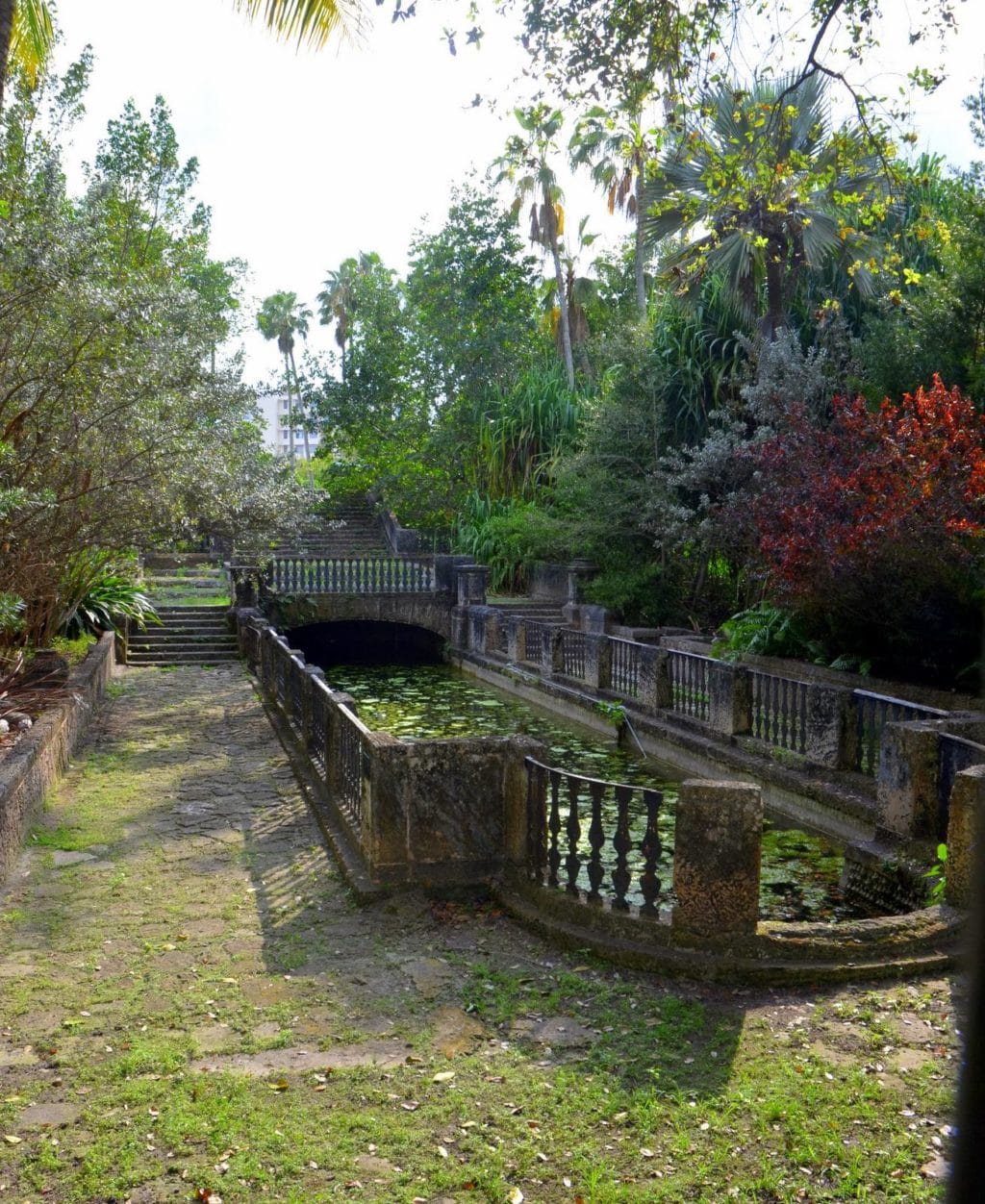
Looking through the hole, I saw another area of the garden that was closed off from the public. I’m not sure if there are any plans to open this section called the Marine Garden, but I definitely wanted to explore it further.
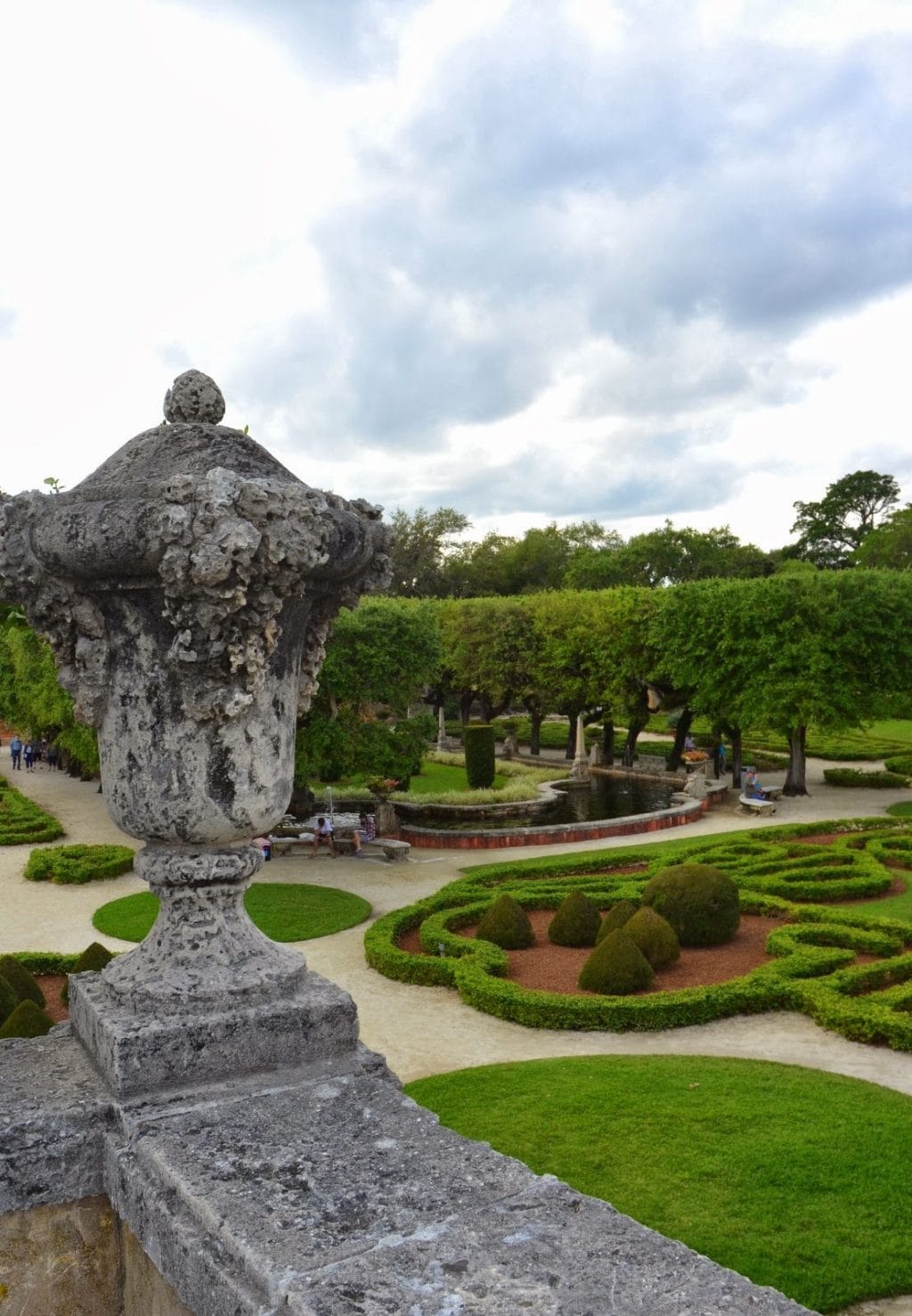
As our time in the garden ended, I was so grateful to have been given the chance to view such a beautiful place.
I hope you enjoyed this ‘virtual’ tour. If you are ever in Miami, I encourage you to take time to explore the Vizcaya Museum and Gardens.
***********************
If you want to explore this garden further and learn more about its history, check out my friend Steve’s latest blog post.
Next time, I will share with you our next Floridian adventure, which was to create a community garden. While vegetable gardening is much the same wherever you live (except for the plsnyinh calendar) we did encounter an unusual barrier, which I will share in my next post.
*I traveled to Miami as part of a group called the Saturday6, which is a group of six garden-bloggers from around the country brought together by the folks at Troybilt.

 Noelle Johnson, aka, 'AZ Plant Lady' is a author, horticulturist, and landscape consultant who helps people learn how to create, grow, and maintain beautiful desert gardens that thrive in a hot, dry climate. She does this through her consulting services, her online class Desert Gardening 101, and her monthly membership club, Through the Garden Gate. As she likes to tell desert-dwellers, "Gardening in the desert isn't hard, but it is different."
Noelle Johnson, aka, 'AZ Plant Lady' is a author, horticulturist, and landscape consultant who helps people learn how to create, grow, and maintain beautiful desert gardens that thrive in a hot, dry climate. She does this through her consulting services, her online class Desert Gardening 101, and her monthly membership club, Through the Garden Gate. As she likes to tell desert-dwellers, "Gardening in the desert isn't hard, but it is different."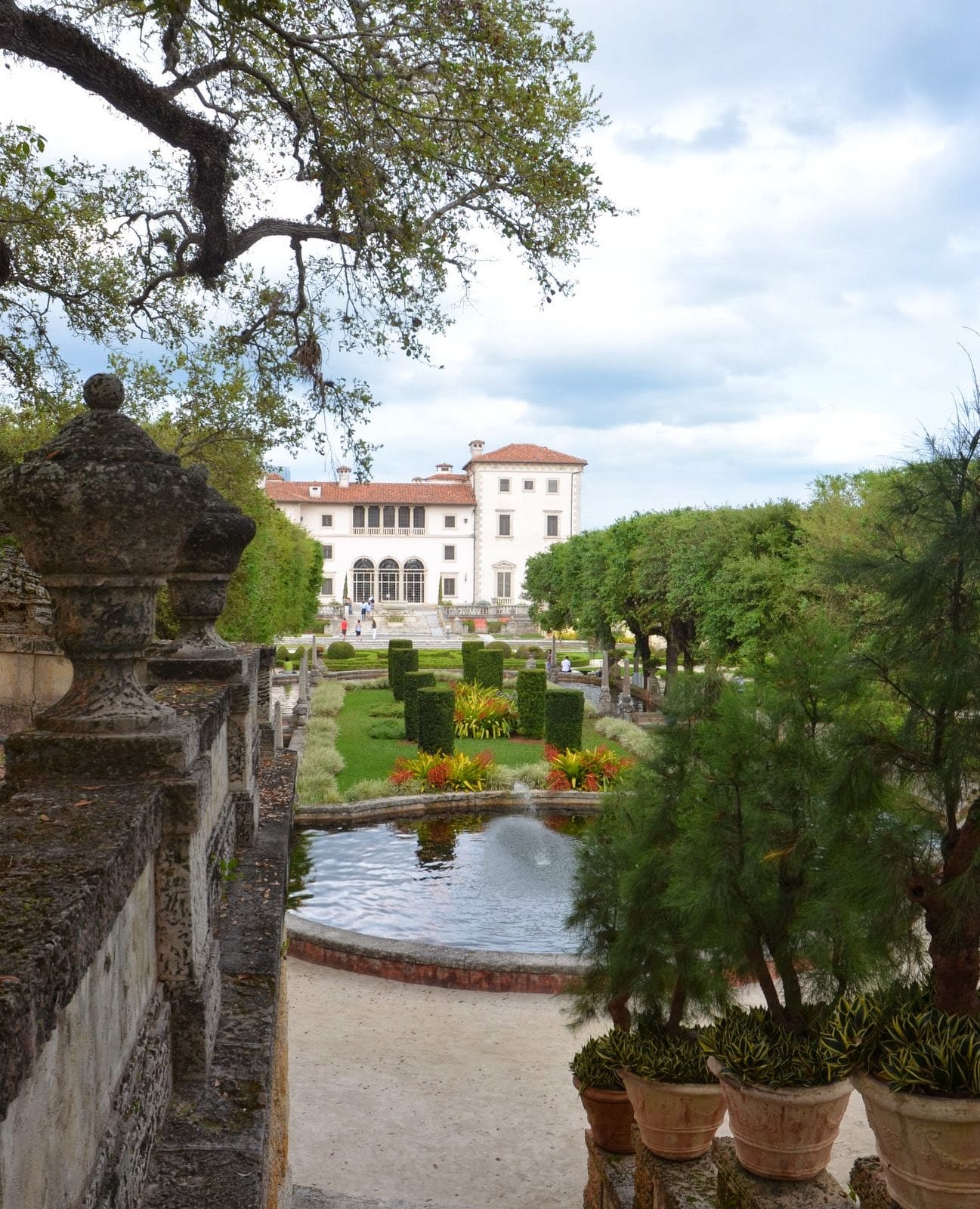
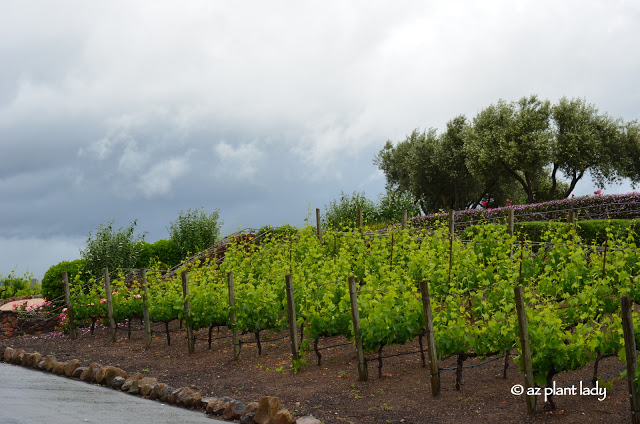
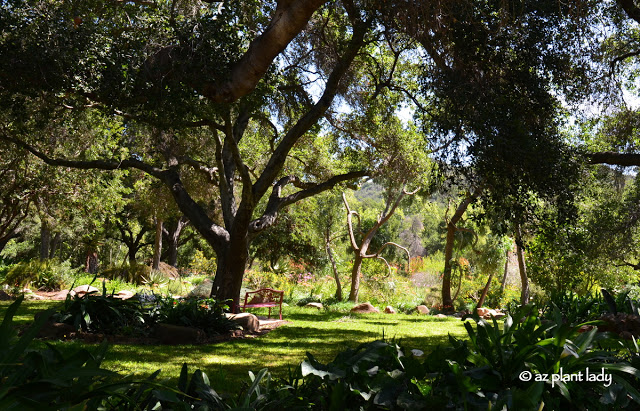
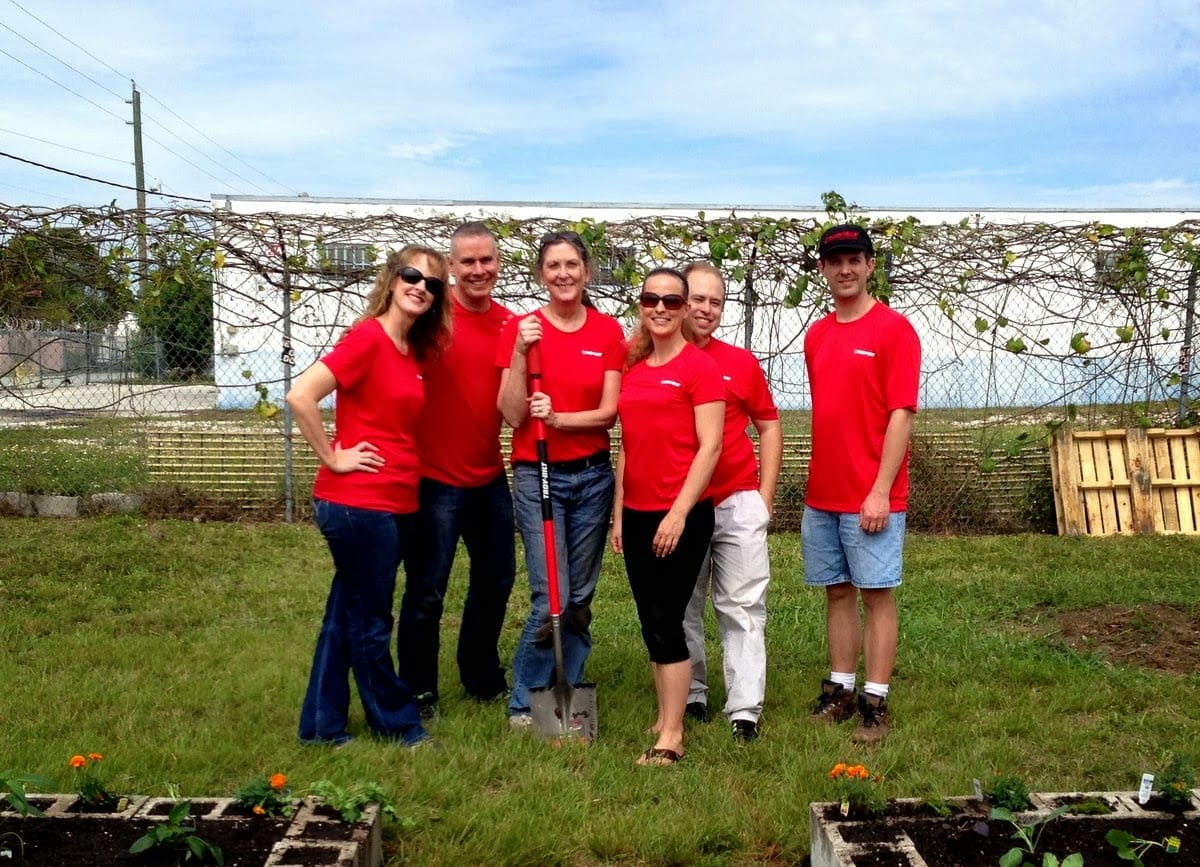
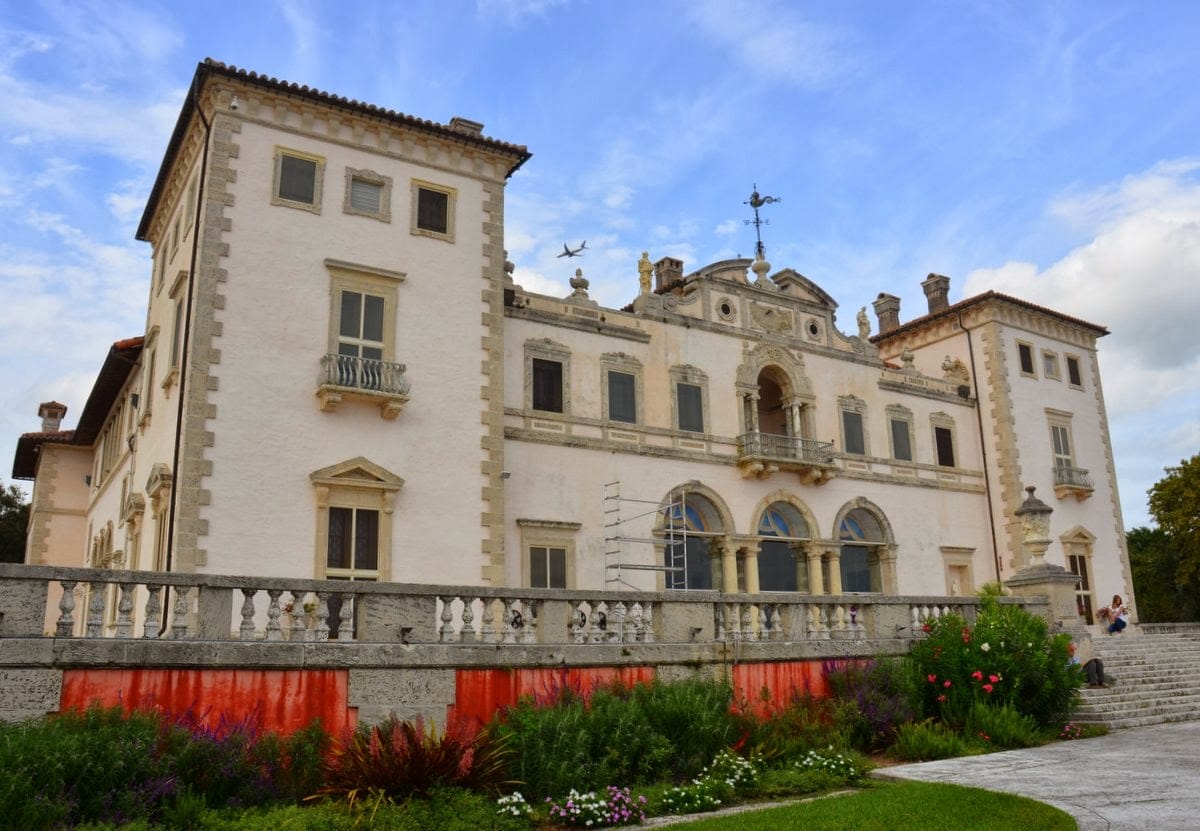
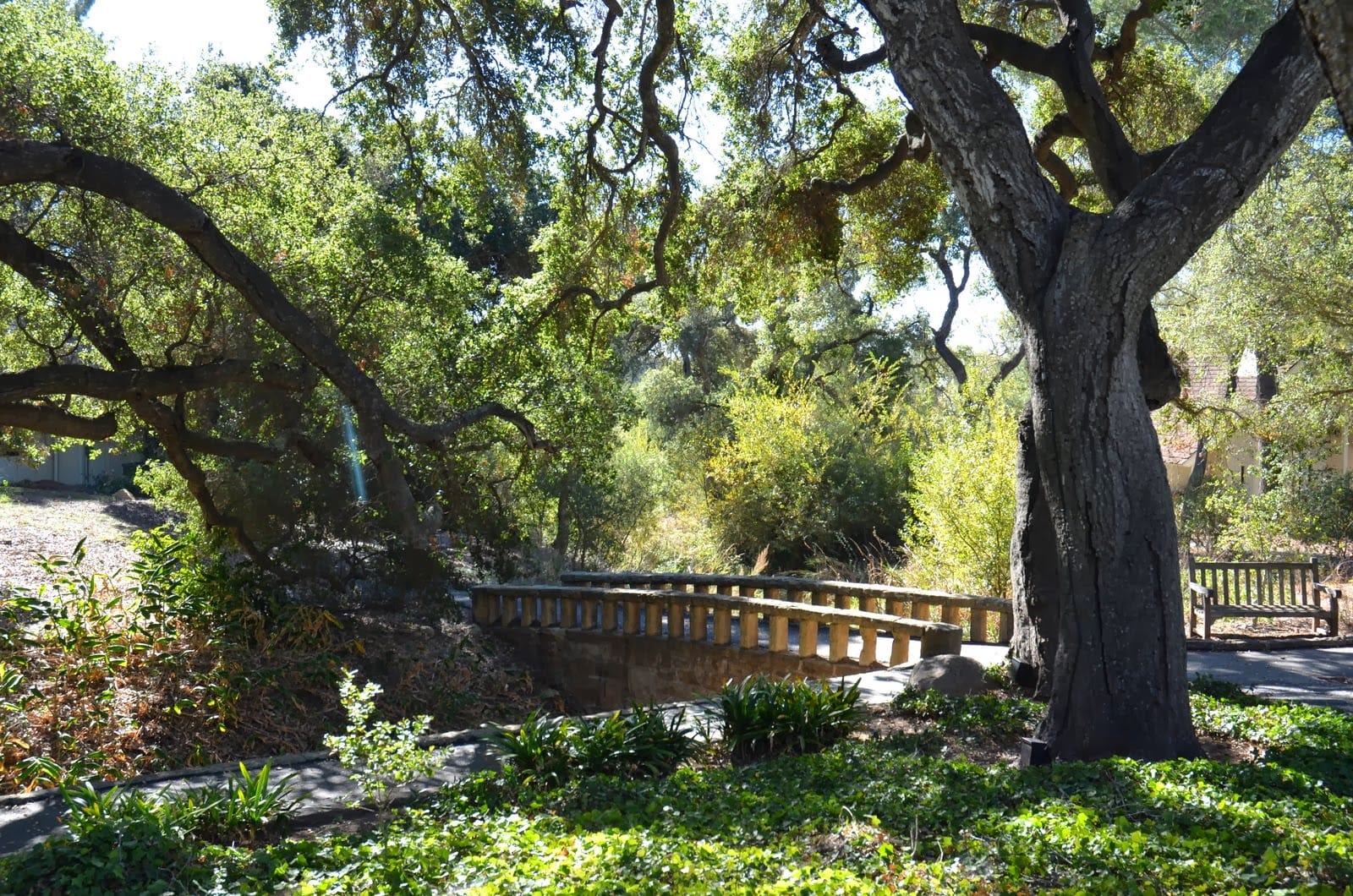







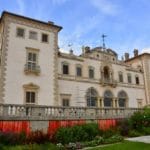

So much to see in that garden, it looks like! Funny, but the live oaks give it a subtropical, southern look, while the mangroves give it a near tropical look. Looks huge!